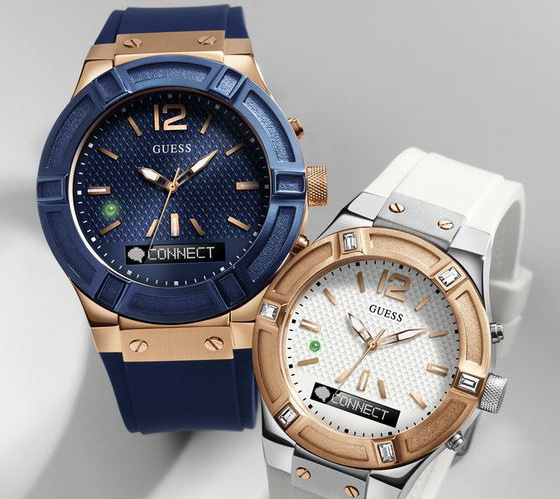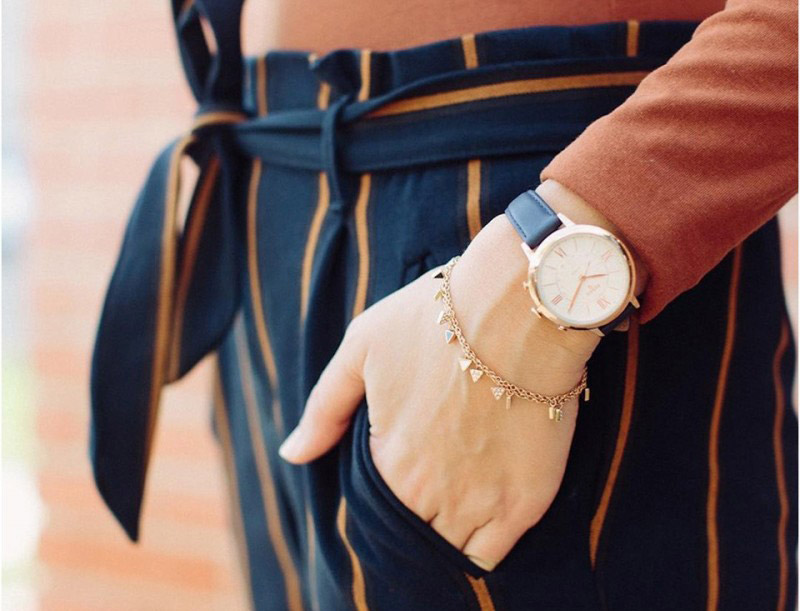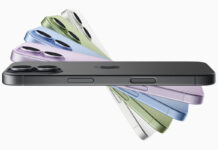
Not all smartwatches are the same, and within the category, hybrid ones differ on the technology inside and the look and feel on the outside.
In this case, a “regular” smartwatch is the one that looks like something other than the mechanical watches we’ve come to know for decades. These are the devices featuring touchscreens, apps and operating systems that almost feel like having a smartphone or computer on your wrist.
Smartwatches that fall under that category would be those from Apple, Samsung, Fitbit and Garmin.
What’s a hybrid smartwatch?
In short, a hybrid smartwatch fuses together the look of a mechanical watch with some of the functionality of a smartwatch. That means it’s a connected device that can pair with your phone, track activity and even sync with an app to deliver the data it collected.
On the face of it, hybrid smartwatches resemble standard mechanical watches. They have analog watch faces and dials that essentially do the same thing, with styling that mimics the traditional standards you would expect in such a timepiece.
Where they deviate is in the technology under the hood. These watches are equipped with sensors and accelerometers to accurately track activity, so that you know how much you’re moving. That can include steps, calories burned and other metrics you would see on the dedicated app on your phone.
Most hybrid smartwatches don’t have digital displays showing these figures for you, though some will include smaller analog faces to keep track of steps. Some will also alert you to incoming notifications, be it through vibrations or small displays to tell you what they are.
How hybrid smartwatches work
 When it comes to telling time, hybrid smartwatches are the same as mechanical watches. The hands turn clockwise like anything else. Beyond that, they’re always tracking activity, so if you walk thousands of steps a day while wearing one, you will see that number—either on the watch itself, or later when you open up the app.
When it comes to telling time, hybrid smartwatches are the same as mechanical watches. The hands turn clockwise like anything else. Beyond that, they’re always tracking activity, so if you walk thousands of steps a day while wearing one, you will see that number—either on the watch itself, or later when you open up the app.
Generally, hybrid models don’t have heart rate monitors or other bells and whistles usually found in regular smartwatches. There are no apps within the watches, nor the ability to change watch faces to other styles. When you get a hybrid smartwatch, you are already sold on the look and comfort of the timepiece and the band.
There may be multiple dials on the side corresponding with smarter functions. For instance, you could set an alarm or reject a phone call by using one of those dials. Since there are no touchscreens, controls always feel analog, so you’re not tapping or swiping anything.
Notifications can vary, depending on the model. If the hybrid smartwatch has a small display, it could tell you who called or messaged. A vibration might also help to tell you. The latter is especially true if the watch has no digital display of any kind because in those cases, the hands might move to indicate what you need to know.
For example, if you designated a certain number on the watch to a specific app, the hand will move there when something comes in. Say you get a text message, and you allotted the number 2 to that, the hand would move there for brief moment to tell you have a message before going back to telling the proper time. Another example might be a smaller dial handling the notifications without affecting the larger one’s job of telling time.
Battery life and durability
Unlike regular smartwatches, hybrid models often use coin-sized batteries for power. That means that instead of having to recharge every few days, the batteries can last several months, if not a full year. Bluetooth Low Energy (LE) doesn’t drain a battery quickly, and since there’s no large digital display to keep on, battery life is less of an issue.
Replacing the battery is pretty easy, and probably wouldn’t require going to a watch store. The batteries also aren’t proprietary, meaning you can easily find replacements. Remove the battery compartment, swap it out for a new one, and you’re done.
Another key is durability, wherein hybrid smartwatches are more likely to be water-resistant. The depths can vary, but it’s not uncommon to find models that can dip all the way down to 50 meters. Look for a watch designated with 5ATM, and you’ll know you found one.
Then there are the bands themselves. Being so close to mechanical styling, hybrid models use standard lugs. That makes really simple to replace the band with anything you want that fits. If you have a band you loved on an old analog watch, put it on a hybrid and rock it that way.

Covering both sides
Where regular smartwatches tend to be beefier in size to accommodate all the tech inside, hybrid watches are more stylishly mixed. Women who want some connectivity without the look of a regular smartwatch would find more options available. Not only in how they look, but also in sizing, since hybrid models aren’t always linear.
Fashion brands do cater to both men and women in this area. Fossil, Michael Kors, Skagen, Guess, Movado and Nixon all make hybrid timepieces with an array styles. To complement their watches, they also have dedicated apps on iOS and Android to help set up and manage their respective features.
Going with a hybrid
There is a broader level of choice in hybrid smartwatches compared to regular models. That disparity is somewhat offset by the higher number of features and functionality the regular ones offer. You can’t really alter the look of a hybrid outside of changing the band. Regular smartwatches have dozens, if not hundreds, of different watch faces one can choose from.
Getting a hybrid smartwatch is as much about fashion as it is about function. You care about how it looks as much, if not more, than what it can do. The technology features are almost like a bonus, in that sense. You end up with something on your wrist that looks nice, caters to your style preferences, while also tracking your daily activity.
You can check out the latest hybrid smartwatches by seeing them all here.


